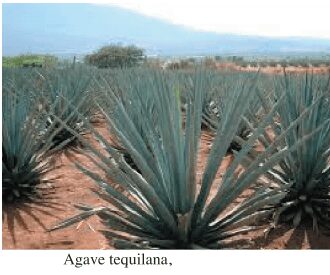1. Independent Review Sought Of Colorado River Management. The federal government’s research of the over-tapped Colorado River may well have overstated how much water the river will have and how much people will demand from it, says a group of 23 scientists, including three University of Arizona researchers.
Those concerns and others have led the researchers to call for an independent review by the National Academy of Sciences of how the federal government is researching the river’s problems, issues and management needs.
In a letter this week to Interior Secretary Sally Jewell, the scientists say federal research neglects a wide range of concerns about the Colorado River ecosystem and the massive population that depends on it. Those concerns include water quality, impacts on groundwater supplies from river use, climate change, flood management, survival of native fish and other issues. A poorly researched and managed river will lead to more vulnerabilities and expenses, they say
The letter underscores the broad dissatisfaction that researchers and conservationists in general have with how the feds are overseeing the river, whose reservoirs — including Lake Powell and Lake Mead — have steadily dropped during a 15-year drought.
“The independent review that’s outside of existing power structures tends to bring uncomfortable questions out in the open, in ways that don’t happen when they’re done by existing (government) entities with huge, vested interests in the outcome,” said one of the 23 scientists, Brad Udall, a Colorado State University water and climate researcher, and son of the late Tucson congressman Morris “Mo” Udall.
Once the Interior Department gets the letter later this week, “we plan to carefully review it as we take all Western water issues, including Colorado River issues, very seriously,” Emily Breyer, Jewell’s deputy press secretary, said in an email.
A key issue in the letter is how the federal government has met a 2009 federal law requiring research of the impacts of climate change and how people can adapt to it on the Colorado and other major river basins managed by the Bureau of Reclamation.
In 2012, the bureau published a study warning that by 2060 the river could face a median annual shortfall of 3.2 million acre feet, and that the shortfall could peak at 6.8 million. The 3.2 million is twice the annual supply of the Central Arizona Project that delivers drinking water to Tucson and Phoenix
2. How Assured Is Our 100-Year Water Supply? When developers plan major projects in the West Valley and elsewhere in Arizona, they are required to secure a certificate from the Arizona Department of Water Resources that an “assured 100 year supply” of water exists for the proposed development.
This provision is intended to ensure two things:
1. That the ultimate buyers of properties can, in fact, count on a readily available supply of water to the property in perpetuity.
2. That our ground water resources will not be depleted supporting the development.
Read the entire article on line at http://www.azcentral.com/story/news/local/glendale/contributor/2015/10/12/how-assured-our-100-year-water-supply/73802356/
1. Continued from Page 1
By 2060, the river’s supply is likely to be reduced 9 percent from 20th century averages due to climate change, the study said.
But the new letter said:
The 2012 report focused too much on a possible 9 percent reduction, when 21st century river streamflows are averaging 19 percent lower annually than the 20th-century norms. Researchers have said that climate change could reduce runoff by 6 to 45 percent by 2060.
The feds have failed to examine the stress that shrinking supplies and increased demands for river water put on groundwater supplies. A 2014 study led by California scientists warned that groundwater supplies are being depleted across the basin.
While flood risks are low today when many reservoirs are half full, they could rise again if management of the river can restore reservoir levels, UA geologist Baker said. If that happens, the reservoirs could be very vulnerable because, according to research conducted by Baker and others, many major floods occurred in the basin near Moab, Utah, over the past 2,000 years, including some far worse than the 1983 flood that many experts said almost destroyed Glen Canyon Dam.
The bureau forecasts of water supply shortfalls relied on outdated population projections — made before the real estate market crash in 2007 caused growth rates to plummet — and on inflated water demand estimates
While it would be positive for the river if water use and population doesn’t increase as fast as expected, inflated population and water demand forecasts can be used to justify building expensive, environmentally damaging water projects, said Udall and Douglas Kenney, a University of Colorado researcher who signed the letter.
While the 2012 bureau study examined salinity concerns, it didn’t follow the 2009 law’s requirements to look more generally at water quality issues involving heavy metals and organic compounds affecting wildlife habitat, human health and the economy.
Baker cited water quality as an example of how researchers need to respond to changing conditions on the river. Read more at http://tucson.com/news/local/independent-review-sought-of-colorado-rivermanagement/article_f303fa2a-9e13-5ef8-970a-150eb10aa681.html
3. Safe Drinking Water Rulemaking. ADEQ is proposing to update its safe drinking water rules in order to conform to changes made to federal rules over the past seven years. ADEQ plans to incorporate by reference the Revised Total Coliform Rule into a new section, and make corresponding changes in other sections. ADEQ also plans to incorporate by reference the 2007 changes to the Lead and Copper Rule. ADEQ is authorized to enforce federal drinking water standards under A.R.S. § 49-353(A)(2)(a).
ADEQ has published the Notice of Proposed Rulemaking for updates to the Safe Drinking Water rules (18 A.A.C. 4, Articles 1 and 2). The Notice of Proposed Rulemaking is available here (at page 2286): http:// apps.azsos.gov/public_services/register/2015/41/04_proposed.pdf. Information on the Safe Drinking Water rulemaking and other ADEQ rulemaking is also available on ADEQ’s website.
4. Court Puts Brakes On New Water Rule. A US Court has temporarily blocked the a federal water rule that would fold temporary waterways into Clean Water Act protections, last Friday.
The US Court of Appeals for the 6th Circuit granted a temporary stay against the Water of the United States (WOTUS) rule. The stay is the latest of several attempts to derail many Obama administration environmental policies. The WOTUS rule was intended to clarify which bodies of water are under the supervision of the Clean Water Act.
“This decision is a critical victory in our fight against this onerous federal overreach,” West Virginia Attorney General Patrick Morrisey told the Associated Press. West Virginia is one of the states that has waterways that would newly fall under the Clean Water Act if the WOTUS stays.
Eighteen states are challenging the new standards imposed by the WOTUS. Injunctions have already been placed on in North Dakota since August. The WOTUS still faces increased opposition from Republicans in Congress, farmers, and energy companies.
The court did not believe the 18 states challenging the stricter standards would be unduly harmed by the rule, but also said a temporary stay would not put the waterways in question in jeopardy.
“A stay allows for a more deliberate determination whether this exercise of executive power… is proper under the dictates of federal law,” the court said.
The EPA has said it respects the court’s decision and supports more consideration on the rules. Environmental advocates who fought for the new rule argue that the ruling postpones vital protections of waterways that have been long neglected.
You can read the Sixth Circuit opinion at http://www.ca6.uscourts.gov/opinions.pdf/15a0246p-06.pdf
5. November 4, 2015 Complimentary OPERATIONS TOUR & WORKSHOP

When: November 4, 2015
From 7:00 AM until 10:30 AM
Where: 64th Street & Thomas Road
Phoenix, Arizona
Presenters:
Supervisors from City of Phoenix, Town of Gilbert, City of Scottsdale, and City of Tempe
Contact: Larry Leischner [email protected]
Earn 2.5 PDH’s Snacks, donuts, and coffee! Please carpool as parking space is limited. Registration is limited to 20 sign ups.
ATTENDEES WILL NEED TO WEAR HARD HATS, STEEL TOE SHOES
To register, go to AZWater.org, and click on “Calendar & Events” on the left hand side of the page. Select the workshop that you want to attend, and click “register”
6. Fall Scents To Warm The Home And Heart. It’s fall and perhaps you are wanting some scents that remind you of the season. You don’t need special equiptment, just place and one of the material found below into a pan with one inch of water and then allow the water to warm slowly
Anise: The slightly sweet and aromatic scent of anise has spicy undertones. It is commonly described as licorice-like. In addition to being a powerful antiseptic, anise also has antifungal properties, as detailed in a 2005 study in the journal Acta Pharmaceutica. The essential oil makes a potent ingredient in any disinfectant cleanser. .
Cinnamon: One of the oldest spices used by humans, cinnamon has a characteristic spicy fragrance. Various studies have reported the strong antimicrobial activity in cinnamon extract, and the essential oil has been found to be especially effective in repelling insects. Cinnamon’s stimulating volatile oils are also vasodilating, increasing circulation and warmth in the body.
Fir: The fragrance of the fir pine tree is one of the finest coniferous scents. Fresh, balsamic and piney in : The fragrance of the fir pine tree is one of the finest coniferous scents. Fresh, balsamic and piney in fragrance, the oil and resin of the fir were traditionally used for their antiseptic properties. fragrance, the oil and resin of the fir were traditionally used for their antiseptic properties

Rosemary: Truly intoxicating, the scent of rosemary is fiery and spicy with a hint of pine. The volatile oils of rosemary have long-lasting antibacterial and antiseptic properties, which make it a favorite in cleansers and sprays. It is also highly effective at dissolving grease and repelling insects sprays. It is also highly effective at dissolving grease and repelling insects thanks to its high camphor content.
7. Agave: The Elixir for Parties and Biofuel? Famous for its role in tequila and mezcal production, the agave plant was worshipped by Mexico’s natives long before the Spaniards arrived in the 15th century. The Aztec goddess Mayheul was closely associated with agave, a symbol for life, health, dance and fertility. According to the International Organic Agave Alliance, archeological findings date the plants usage back some 10,000 years. But the broad-leafed, spiky plant may have more use than just supplying a bottle of spirits for a wild weekend revelry

Researchers from the Australian Research Council Centre of Excellence in Plant Cell Walls released a study in PLOS ONE touting the plant as a potential source for biofuel.
“Bioethanol yields from agave fermentation could rival the most successful biofuel feedstock crops around the world,” said co-author Prof. Rachel Burton, of the Univ. of Adelaide’s School of Agriculture, Food and Wine. “Importantly, it doesn’t compete with food crops; it’s fast growing so the whole plant could be used rather than just harvesting the leaves; and it is up to 10 times more water efficient than some other crop plants.”

Studying Agave americana and Agave tequilana, the researchers found use of the former could yield 4,000 to 13,600 L/ha/yr, and the latter, 4,400 to 14,800 L/ha/ yr. If the whole plant is used, that is. Even at the low end, the values surpass theoretical yields from fi rst- generation feedstocks, such as corn, wheat and sugar cane, according to the researchers. The high values double yields from recently investigated biofuel sources, such as poplar, sorghum and switchgrass.
Tequila and mezcal are made from the stem tissue of Agave tequilana when the plants are between eight and 12 years old. When heated, the stem tissues release fermentable fructose. However, the leftover leaves, which the researchers say accounts for 66% of the biomass, is discarded.
“Waste leaves could generate up to (8,000 L/ha/yr) and increase profit from the agave crop, or, if directly separating and fermenting the juice was more economically viable, up to 4,000 (L/ha/yr) is achievable,” said Burton. Research is in progress to find the best cultivation methods for bioethanol production.
8. FREE Biohazardous Medical Waste Seminar, October 28. The Department of Environmental Quality will be presenting a FREE Biohazardous Medical Waste seminar on October 28th from 9:00 a.m. to Noon at the Huachuca City Council Chambers. Doctors, dentists, Emergency Response Personnel, Police, Fire, Tattoo Artists and more should attend. To register for this free seminar, go to [email protected].
9. AZ State Fair Opens! AZ State Fair Opens!

Bret Michaels
Saturday, October 17, 7:00 PM
Meat Loaf
Sunday, October 18, 7:00 PM
Rick Springfi eld
Wednesday, October 21, 7:00 PM
Sheryl Crow Thursday, October 22, 7:00 PM
Gary Allan
Friday, October 23, 7:00 PM
Austin Mahone
Saturday, October 24, 7:00 PM
Jack & Jack
Sunday, October 25, 5:00 PM
Jackson Browne Wednesday, October 28, 7:00 PM

Phoenix
Gates Open
Wed: Noon – 9
Thu:Noon-9 pm
Fri:Noon -10
Sat: 10 – 10 pm
Sun: 10 – 9 pm
Jane’s Addiction
Thursday, October 29, 7:00 PM
Flo Rida
Friday, October 30, 7:00 PM
THIRD DAY Saturday, October 31, 7:15 PM
Natalia Jimenez
Sunday, November 1, 5:00 PM
Aaron Lewis with William Elliott Whitmore
Wednesday, November 4, 7:00 PM
Jason Derulo
Thursday, November 5, 7:00 PM
Hanson with Nelson
Friday, November 6, 7:00 PM
Old School Jam Saturday, November 7, 7:00 PM
